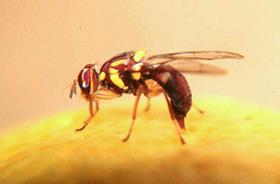
A national approach to fruit fly research has been flagged as one of the key recommendations for the Australian horticultural industry in the 'National Fruit Fly Research, Development and Extension Plan', released on 22 June.
The plan specifically recommends the need for national coordination in research and development; the registration of new chemicals to replace dimethoate and fenthion; developing long-term disinfestation strategies; and standardising field operations and updating national codes of practice.
The plan also highlights the need to boost biosecurity in order to protect and built Australia’s export markets, with more than 75 per cent of the country’s fruit and vegetable exports, valued at A640m in 2012/13, susceptible to fruit fly.
The national plan has been announced following the China-Australia free trade agreement, and several months after Vietnam imposed an industry-wide ban on Australian fresh produce due to fruit fly concerns.
“You can have a free trade agreement, but unless you’re allowed to export the fruit, it really stops there,” Joyce told the ABC. “There are so many countries where this is one of the biggest issues they bring up with us: what is our plan to deal with fruit fly?
'We're making sure that we don't just lie idle at the end of a free trade agreement, but we pursue, right to the very end, our capacity to deliver a product that fits the protocols and desires of the nations that want to buy our product.'
The plan also hones in on the need to address south eastern Australia’s outbreaks of Queensland fruit fly, as well as address potential off-shore biosecurity threats.
“As well as the established Queensland and Mediterranean fruit flies, there are over 30 exotic species offshore which are biosecurity threats to Australia’s A$6.9bn horticultural industries,” said Jon Durham, independent chair of the National Fruit Fly Strategy Advisory Committee. “A national strategy will focus research where it’s needed most, giving growers, regulators and governments new tools to improve farm productivity and secure market access.
“A national approach is also the best way to improve surveillance and manage the risks of exotic fruit fly species entering Australia.”
The plan was developed by Plant Biosecurity CRC following consultations with growers as well as state and federal government and research agencies.



